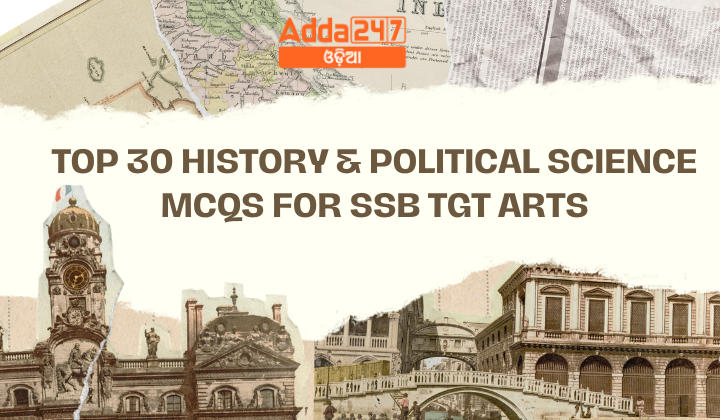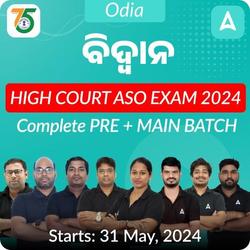If you’re preparing for the SSB TGT Arts exam, mastering multiple-choice questions (MCQs) in History and Political Science is crucial. This article provides a comprehensive set of 30 MCQs designed to test and enhance your knowledge in these subjects. Each question is followed by the correct answer for self-assessment.
Top 30 History & Political Science MCQs for SSB TGT Arts
- When was the first trading factory of the East India Company (EIC) established in Masulipatnam?
A) 1600
B) 1611
C) 1612
D) 1757
Answer: B) 1611 - Which battle marked the defeat of the Portuguese by the EIC?
A) Battle of Plassey
B) Battle of Buxar
C) Battle of Swally
D) Battle of Masulipatnam
Answer: C) Battle of Swally - The Battle of Plassey in 1757 was a decisive point in establishing British rule in which region?
A) Madras
B) Bombay
C) Calcutta
D) Bengal
Answer: D) Bengal - What was the primary aim of the Regulating Act of 1773?
A) To end the commercial monopoly of EIC
B) To establish the Governor General in Bengal
C) To introduce the Doctrine of Lapse
D) To transfer powers to the British Crown
Answer: B) To establish the Governor General in Bengal - Who framed the Scheme of the Subsidiary Alliance?
A) Lord Dalhousie
B) Lord Wellesley
C) Lord Cornwallis
D) Lord Curzon
Answer: B) Lord Wellesley - Which ruler was the first to accept the Subsidiary Alliance?
A) Nizam of Hyderabad
B) Maharaja of Mysore
C) Nawab of Awadh
D) Raja of Satara
Answer: A) Nizam of Hyderabad - Which Charter Act ended the EIC’s commercial monopoly except for trade with China and tea?
A) Charter Act of 1793
B) Charter Act of 1813
C) Charter Act of 1833
D) Charter Act of 1853
Answer: B) Charter Act of 1813 - What was the first state to be annexed under the Doctrine of Lapse?
A) Mysore
B) Hyderabad
C) Satara
D) Punjab
Answer: C) Satara - Which Act abolished the rule of the EIC and transferred governance directly to the British Crown?
A) Indian Councils Act 1861
B) Government of India Act 1909
C) Government of India Act 1858
D) Charter Act of 1833
Answer: C) Government of India Act 1858 - The Indian Councils Act of 1861 allowed for what major change in governance?
A) Introduction of bicameralism
B) Separation of provincial budgets
C) Nomination of Indians as non-official members
D) Direct elections
Answer: C) Nomination of Indians as non-official members - Which Act introduced communal awards that led to communal differences in India?
A) Government of India Act 1858
B) Government of India Act 1909
C) Indian Councils Act 1861
D) Charter Act of 1853
Answer: B) Government of India Act 1909 - What major administrative change was introduced by the Government of India Act 1919?
A) Provincial autonomy
B) Bicameralism and direct elections
C) Doctrine of Lapse
D) Double government system
Answer: B) Bicameralism and direct elections - Which Act provided for the separation of provincial budgets from the Central budget?
A) Government of India Act 1919
B) Government of India Act 1935
C) Indian Councils Act 1892
D) Charter Act of 1833
Answer: A) Government of India Act 1919 - Which Act introduced provincial autonomy and greater power to make laws in British India?
A) Government of India Act 1858
B) Government of India Act 1909
C) Government of India Act 1919
D) Government of India Act 1935
Answer: D) Government of India Act 1935 - When was the East India Company founded?
A) 1600
B) 1611
C) 1757
D) 1764
Answer: A) 1600 - Which of the following Constitutions is the lengthiest written Constitution in the world?
a) British Constitution
b) American Constitution
c) Indian Constitution
d) Australian Constitution
Answer: c) Indian Constitution - The Indian Constitution adopts a Parliamentary system of government from which country?
a) United States
b) Canada
c) United Kingdom
d) Australia
Answer: c) United Kingdom - The Indian Constitution is described as a blend of which two characteristics?
a) Rigid and Democratic
b) Federal and Unitary
c) Rigid and Flexible
d) Democratic and Republic
Answer: c) Rigid and Flexible - Which Part of the Indian Constitution guarantees Fundamental Rights?
a) Part I
b) Part II
c) Part III
d) Part IV
Answer: c) Part III - The Directive Principles of State Policy are classified into which three categories?
a) Democratic, Socialist, and Secular
b) Socialistic, Gandhian, and Liberal-intellectual
c) Social, Economic, and Political
d) National, International, and Regional
Answer: b) Socialistic, Gandhian, and Liberal-intellectual - Fundamental Duties were added to the Constitution by which Amendment Act?
a) 24th Amendment Act
b) 42nd Amendment Act
c) 44th Amendment Act
d) 52nd Amendment Act
Answer: b) 42nd Amendment Act - The Indian federation is described as a “Union of States.” This implies that:
a) States have the right to secede
b) States cannot secede
c) States are independent
d) States are only administrative units
Answer: b) States cannot secede - At what age are Indian citizens entitled to vote in elections to the Parliament and State Legislatures?
a) 16 years
b) 18 years
c) 21 years
d) 25 years
Answer: b) 18 years - Which court is at the top of the integrated judicial system in India?
a) High Court
b) District Court
c) Supreme Court
d) Magistrate Court
Answer: c) Supreme Court - The term ‘Secular’ was added to the Indian Constitution by which Amendment Act?
a) 42nd Amendment Act
b) 44th Amendment Act
c) 52nd Amendment Act
d) 61st Amendment Act
Answer: a) 42nd Amendment Act - How many articles were there originally in the Indian Constitution?
a) 450 articles
b) 395 articles
c) 365 articles
d) 299 articles
Answer: b) 395 articles - How many Fundamental Rights are guaranteed by the Indian Constitution?
a) Four
b) Five
c) Six
d) Seven
Answer: c) Six - In which part of the Constitution are the Directive Principles of State Policy enshrined?
a) Part III
b) Part IV
c) Part V
d) Part VI
Answer: b) Part IV - The concept of ‘Single Citizenship’ in India means:
a) Citizens have dual citizenship of Union and States
b) Citizens only have citizenship of India
c) Citizens can choose state citizenship
d) Citizens can have foreign citizenship
Answer: b) Citizens only have citizenship of India - The doctrine of separation of powers was first properly formulated by which jurist?
a) John Locke
b) Jean-Jacques Rousseau
c) Montesquieu
d) Thomas Hobbes
Answer: c) Montesquieu
















